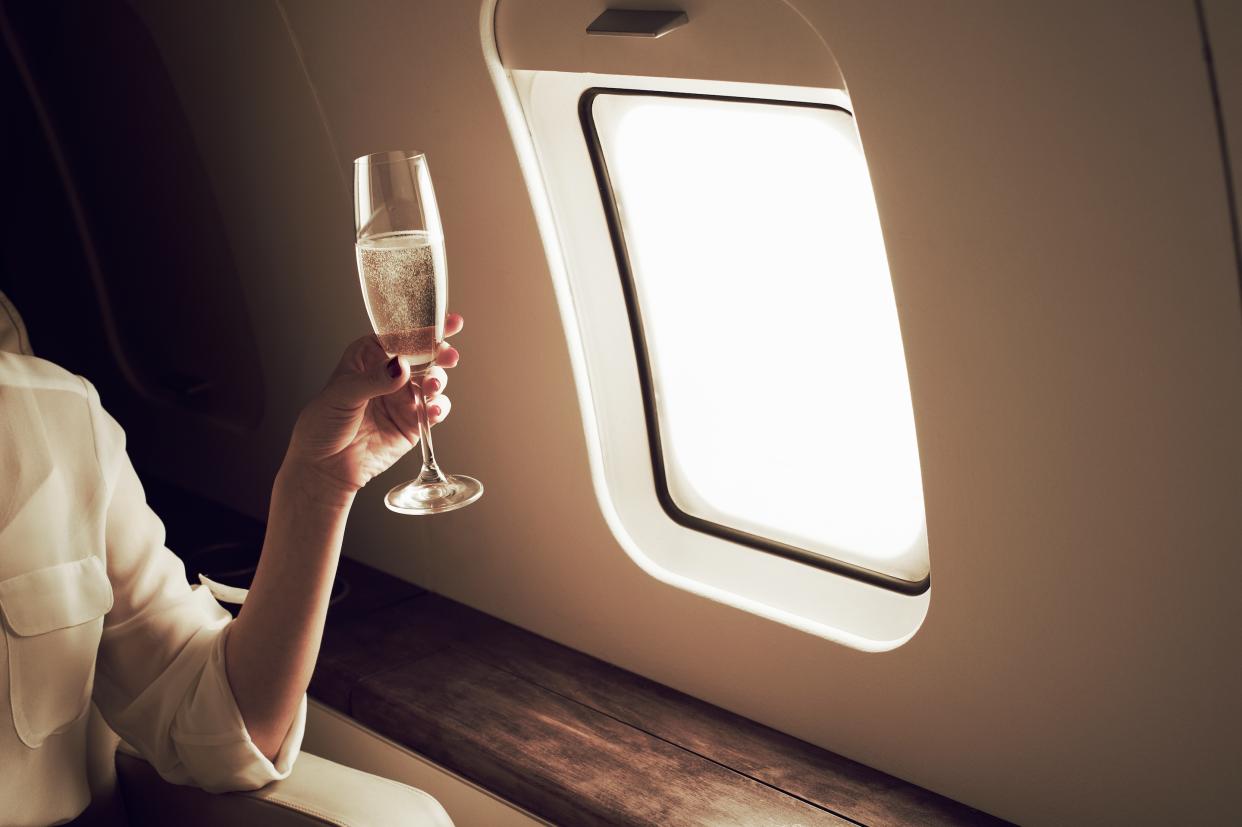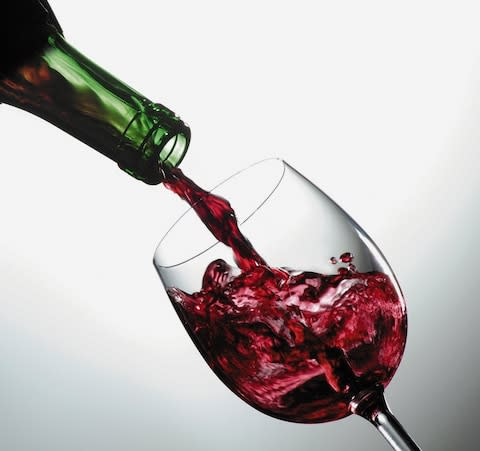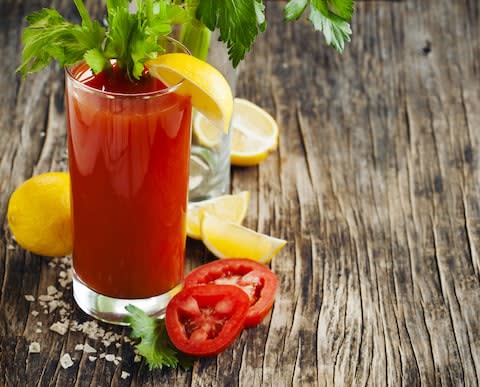Does wine taste different on a plane – and which is the best and worst to order?

In-flight wine is a serious business – but it wasn’t always thus.
“Back in the Seventies, winemakers would tell you that bad vintages were sent to the colonies, or to airlines,” says Andy Sparrow, in charge of travel sales at one of Europe’s biggest wine suppliers, Bibendum, and a buyer for British Airways.
These days, however, any carrier worth its salt has a team of experts tasked with finding the very best bottles to uncork at 35,000 feet, while wineries will leap at the chance to have their finest products served in lounges and cabins.
It’s no wonder. BA flew more than 45 million passengers in 2017, and serves up as many as 100,000 bottles of wine, and 10,000 bottles of champagne, in a single weekend. “Getting on BA’s wine list, particularly in First Class, is now a huge coup for winemakers – as a shop window, it’s hard to beat,” Sparrow adds.
But choosing an airline wine is far from simple. What tastes good on the ground doesn’t necessarily satisfy in the sky. That’s because our bodies change in the confines of a plane cabin, and our taste buds misbehave.

Your taste buds at 35,000 feet
Sparrow, a flight attendant with BA before turning his attention to wine, says the airline began serious research into the issue during the Nineties. Now he and his colleagues have pinpointed 13 conditions that change during a flight, which they believe can spoil the enjoyment of both food and drink.
“The most important condition of all is the humidity,” he says. “The low humidity on an aircraft dries out our mouth and nasal passages, so our taste buds don’t work properly.
“It takes a little while, of course. Next time you’re on a long flight try the wine at the start of the journey and then taste it again at the end – I guarantee you’ll notice a difference. But it’s not the wine that’s changing, it’s you.”
Smell is another key factor – aircraft are not known for being bastions of fragrance in any case, but the low humidity also dulls your sense of smell. Sparrow explains: “So much of the enjoyment of food and wine comes through your sense of smell. Try holding your nose and biting into a basil leaf – it barely registers. But remove your hand and the taste suddenly becomes overwhelming.”
What other conditions affect our enjoyment? “The lighting has an impact, as does the noise and the vibration,” he says. “Then there’s the time change and high stress levels associated with flying, which can affect the pH levels in your body.”
So how can you combat this?
Of the conditions noted above, one of the easiest to address is noise.
“Donning a pair of noise-cancelling headphones could actually be one of the simplest ways in which to make food and drink taste better at altitude,” Professor Charles Spence, author of Gastrophysics: The New Science of Eating, told Telegraph Travel.
Research conducted by Spence and celebrity chef Heston Blumenthal found that listening to music that contains lots of tinkling, high-pitched notes can accentuate our perception of sweetness by 10 per cent. Perhaps “Walking in the Air” is the perfect soundtrack to a bottle of Château d'Yquem?
Conversely, low-pitched noises - like the hum of an aircraft engine - accentuate bitterness by the same amount.
“The effects, it should be said, weren’t huge, but they were large enough to potentially make a difference to the tasting experience while up in the air,” said Spence.
The idea of pairing music with wine isn’t new. Last year Great Western Wine in Bath joined forces with Stylus Vinyl to match classic albums to a good bottle. It reckons London Calling, for example, goes very well with its Chateau du Vieux Parc Cuvée l’Heritage Corbieres.
Stress levels, meanwhile, might be lowered with a little pre-flight meditation. Sunglasses might help too, blocking out that harsh cabin lighting.
Also vital, of course, is choosing the right wine.

Which wines taste best and worst on a plane?
The key is balance, says Sparrow. A wine that, on the ground, has good balance - ie. one which had pleasing blend of acid, alcohol, sugar, tannin, and water - should have good balance in the air.
“Fruit-driven wines generally work very well – a fleshy, ripe red, with lots of dark fruit, a ripe tannic structure and low acidity is perfect,” he adds. “Conversely, some Muscadet wines, though not all, won’t work so well, because they tend to have an assertive, zesty, mineral character, which comes out too raw [when served on a plane]. Traditional Barolo isn’t ideal, either – too leathery and lean, with sharp stalky tannins. You don’t want any aggressive flavours.”
Some have even suggested that grapes grown at higher altitude produce wine that tastes better at higher altitude, a claim Sparrow dismisses as “fanciful marketing – probably dreamed up by a high-altitude winemaker in Mendoza”.
Good champagne still tastes good in the air, he adds, but the cabin pressure does tend to make it slightly less fizzy. The solution? Drink it quickly, we assume (but responsibly).

How does BA choose its wine?
Surely the best way to ensure a wine tastes good on a plane is to taste it on a plane? Alas, BA sommeliers don’t conduct wine-tasting sessions at 35,000 feet – they must rely on instinct, experience and passenger feedback. And there isn’t much room for manoeuvre. BA’s first class wine list always consists of three reds, three whites, three sparkling wines or champagnes, a dessert wine and a port. Furthermore, it will always have at least one white Burgundy and one red Bordeaux, lest the complaints start flooding in. “We left the Bordeaux out once and I remember a passenger telling us that ‘nothing must stand between an Englishman and his claret’,” says Sparrow.
An English sparkling will usually be offered on all flights, too, alongside a traditional champagne.
A sauvignon blanc; a more off-beat white, such as a riesling or an albarino; a New World pinot noir; and a robust red, like a shiraz or syrah, will typically complete the roster.
Which drinks are most popular among fliers?
“In the lounges, champagne and white wine are the order of the day,” says Sparrow. “Red wine takes over in the air.”
Then there’s the mystery of the bloody Mary. Back in 2013, the German airline, Lufthansa, said it was struggling to explain why such vast quantities of tomato juice were being consumed annually on its flights (1.8 million litres, in case you were wondering – which would go a long way to filling an Olympic-sized swimming pool). In response, The Fraunhofer Institute, a Munich-based research organisation, devised a test to find out whether if our perceptions of tomato juice change when in the air.

Subjects sat in the original fuselage of an Airbus A310, where the low cabin pressure, noises and flying conditions of a flight were all recreated.
“At normal pressure, people give tomato juice a much lower rating, typically describing it as musty,” said Andrea Burdack-Freitag from the organisation. But things changed during the simulated flight, with subjects saying they found it more pleasantly fruity.
One word explains it: umami. Tomato juice is packed with the mysterious fifth taste, which comes out very well at altitude. Wines have it too, typically rich and ripe reds, like an Australian shiraz, as well as creamy chardonnays and fine champagne.
But think twice before ordering a bloody Mary on your next flight. It’s the most irritating drink to prepare, says Sparrow.
“Back when I was a flight attendant it was the order we dreaded,” he says. “It takes an age to sort out all the trimmings, and it’s infectious. As soon as one person asks for one, half the cabin fancy their own.”

